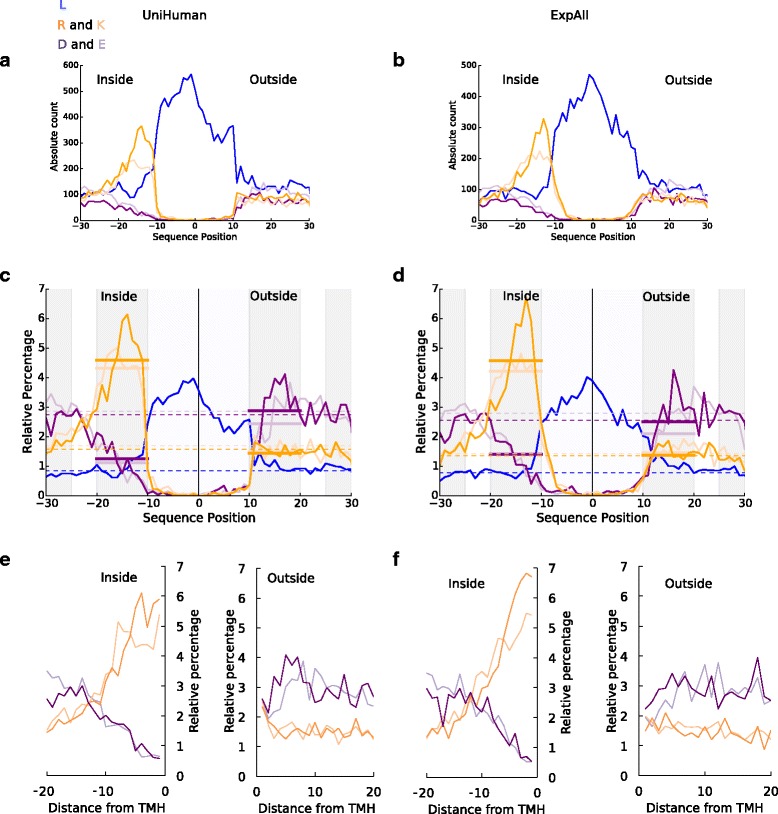Fig. 2.

Relative percentage normalisation reveals a negative-outside bias in TMHs from single-pass protein datasets. All flank sizes were set at up to ±20 residues. We acknowledge that all values, besides the averaged values, are discrete, and connecting lines are illustrative only. On the horizontal axes (a–d) are the distances in residues from the centre of the TMH, with the negative numbers extending towards the cytoplasmic space. For e and f, the horizontal axis represents the residue count from the membrane boundary with negative counts into the cytoplasmic space. Leucine, the most abundant non-polar residue in TMHs, is in blue. Arginine and lysine are shown in dark and light orange respectively. Aspartic and glutamic acid are showing in dark and light purple respectively. a and b On the vertical axis is the absolute abundance of residues in TMHs from single-pass proteins from (a) UniHuman and (b) ExpAll. Note that no clear trend can be seen in the negative residue distribution compared to the positive-inside signal and the leucine abundance throughout the TMH. c and d On the vertical axis is the relative percentage at each position for TMHs from single-pass proteins from (c) UniHuman and (d) ExpAll. The dashed lines show the estimation of the background level of residues with respect to the colour; an average of the relative percentage values between positions 25 to 30 and –30 to –25. The thick bars show the averages on the inner (positions –20 to –10) and outer (positions 10 to 20) flanks coloured to the respective amino acid type. Note a visible suppression of acidic residues on the inside flank when compared to the outside flank in single-pass proteins when normalising according to the relative percentage. e and f The relative distribution of flanks defined by the databases with the distance from the TMH boundary on the horizontal axis. The inside and outside flanks are shown in separate subplots. The colouring is the same as in a and b
